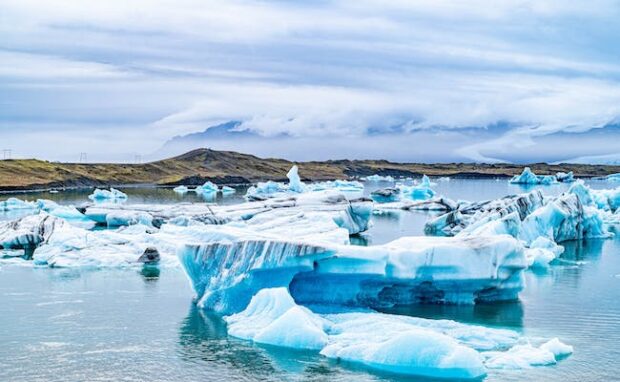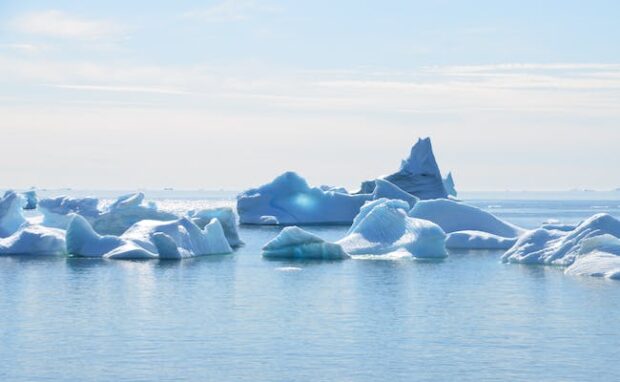Arctic ice may release methane soon
Researchers discovered that the arctic permafrost on a Norwegian archipelago contains massive amounts of trapped methane. However, they fear this greenhouse gas may escape as the ice melts further due to global warming. As a result, such a huge amount of this colorless gas may exacerbate the effects of climate change.
Global temperatures continue to rise, raising the likelihood of various negative effects. For example, environmentalists have warned us that more ice caps will melt as the planet gets hotter, raising sea levels and sinking several countries. Worse, they may release methane that could make the Earth significantly hotter!
This article will elaborate on what we know about the Arctic Ice’s buried methane. Later, I will discuss another potential negative effect of melting ice caps.
What do we know about the Arctic Ice’s methane?

People have been drilling Norway’s Svalbard islands for scientific research and coal mining for many years. Researchers used their previous records to discover methane deposits beneath.
They learned more about the substance’s origins and provided evidence of its migration throughout the archipelago. Thomas Birchall of the University Center’s Department of Arctic Geology conducted one of the most recent studies of this location.
One of the spots he and his team studied produced several million cubic meters of gas in less than a decade. Consequently, they warn that letting that methane out may significantly impact rising temperatures.
Methane is a greenhouse gas because it keeps the Earth’s heat from escaping into space. As a result, letting the Arctic Ice methane escape could exacerbate global warming.
Accumulating more of that colorless gas will melt more ice caps, releasing more methane and starting a vicious global warming cycle. “Svalbard shares a similar geological and glacial history with much of the Circum-Arctic, suggesting that sub-permafrost gas accumulations are regionally common,” the researchers wrote in their paper.
“At present, the leakage from below permafrost is very low, but factors such as glacial retreat and permafrost thawing may ‘lift the lid’ on this in the future,” they added.
You may also like: Sunscreen ingredients found in Arctic snow
The Debrief said Birchall and the team found that gas accumulations at 18 hydrocarbon exploration wells were higher than expected.
“All the wells that encountered gas accumulations did so by coincidence,” Birchall said. “[B]y contrast, hydrocarbon exploration wells that specifically target accumulations in more typical settings had a success rate far below 50%.”
Birchall said drillers near the Longyearbyen airport heard a bubbling sound from their well. In response, they examined the location to confirm explosive levels of methane. Birchall said the team’s alarms “were immediately triggered when we held them over the wellbore.”
Other arctic ice breakthroughs

The permafrost of Russia’s Kolyma River also contains a hidden danger called zombie viruses. Birgitta Evengård, professor emerita at Umea University’s Department of Clinical Microbiology in Sweden, said we must be careful due to their potential threat.
“You must remember our immune defense has been developed in close contact with our microbiological surroundings,” she said.
“If there is a virus hidden in the permafrost that we have not been in contact with for thousands of years, it might be that our immune defense is not sufficient,” Evengård added. NASA defines permafrost as “any ground that remains completely frozen, 32°F (0°C) or colder, for at least two years straight.
Yahoo Finance says Virus expert Jean-Michel Claverie has studied these “giant” viruses for over ten years. He and his team confirmed ancient pathogens from the Siberian permafrost remain infectious.“
With climate change, we are used to thinking of dangers coming from the south,” Claverie said, referring to diseases spreading from tropical regions.
“Now, we realize there might be some danger coming from the north as the permafrost thaws and frees microbes, bacteria, and viruses,” he added. Some might think zombie virus warnings are fear-mongering, but similar threats have emerged.
You may also like: China unveils drillship for harvesting ‘flammable ice’
In 2016, a heat wave in Siberia activated anthrax sores. Consequently, they infected dozens and killed thousands of reindeer and a child. Claverie has found seven families of zombie viruses, ranging from 27,000 to 48,500 years old.
Australia’s 9 News report states, “We view these amoeba-infecting viruses as surrogates for all other possible viruses that might be in the permafrost.”
“If the amoeba viruses are still alive, there is no reason why the other viruses will not be still alive and capable of infecting their own hosts,” he added.
Conclusion
Researchers discovered that the Arctic Ice contains massive amounts of methane. It could leak into the atmosphere as the ice caps melt due to climate change.
The methane also moves through other frigid regions and may leak in several areas. Consequently, we must find new ways to preserve the environment.
Fortunately, we have developed several breakthroughs that could lead us to a more sustainable future. Learn more about them at Inquirer Tech. Get more information about this Arctic study from Frontiers in Earth Science.